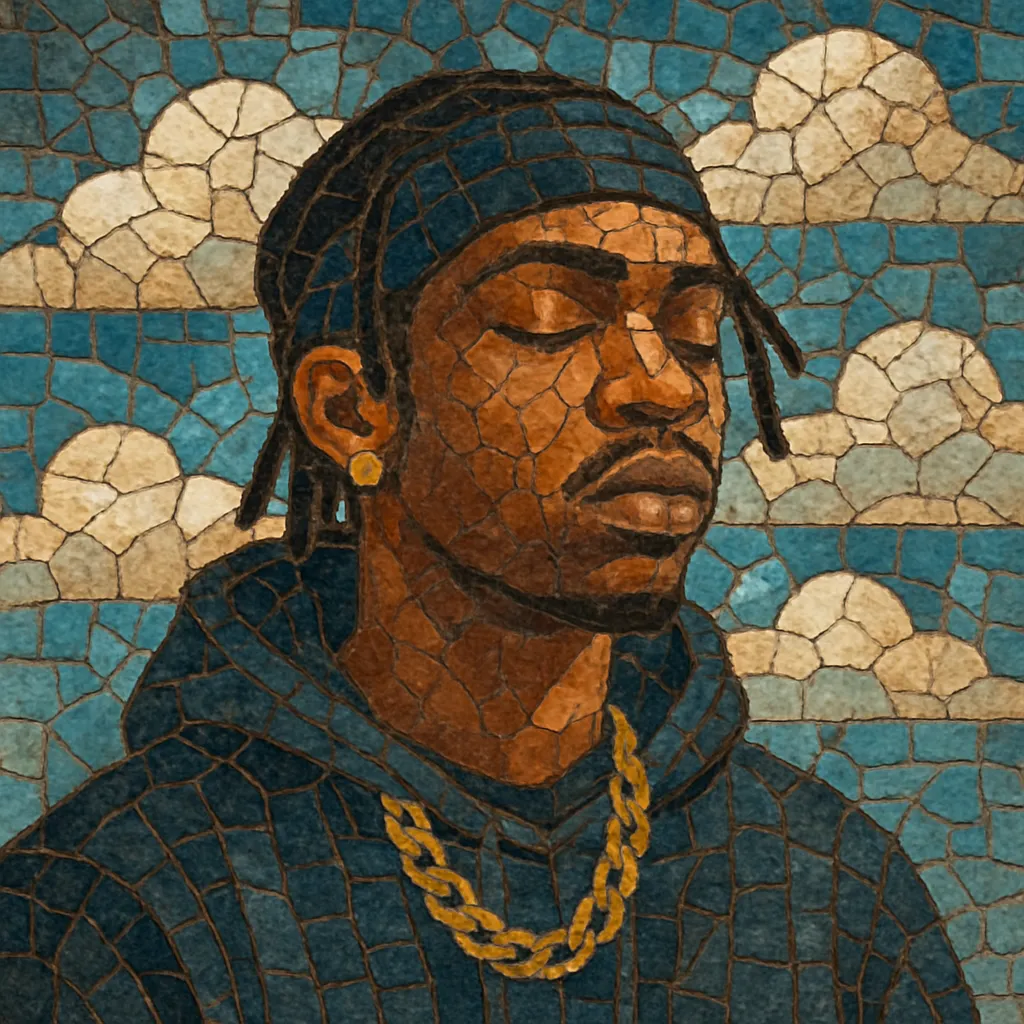
Cloud rap is a hip hop microgenre defined by ethereal, reverb‑drenched textures, soft pads, and minimal drum programming that creates a floating, dreamlike atmosphere.
Beats tend to be sparse and space-conscious, with airy synths, distant vocal samples, and gentle 808s supporting raps that are often introspective, deadpan, or emotionally detached. The sound crystallized online in the early 2010s through platforms like DatPiff, Tumblr, and SoundCloud, pairing Southern rap rhythms with ambient and chillwave aesthetics.
Rather than virtuosic density, cloud rap prizes mood, negative space, and a sense of weightlessness, translating internet-era solitude and nostalgia into hazy, pastel-toned hip hop.
Prototypes of cloud rap emerged at the end of the 2000s as internet-native producers blended Southern hip hop drums with ambient pads and heavily reverbed samples. Lil B’s prolific mixtape era and his collaborators helped define a lo-fi, mood-first approach, while producers like Clams Casino circulated beat tapes full of washed-out textures and spectral vocal chops.
In 2011, Clams Casino’s production on A$AP Rocky’s early work and Main Attrakionz’s tapes pushed the style into wider visibility. The sound emphasized slow-to-mid tempos, pillowy pads, and generous space, contrasting with the maximalism of mainstream club rap of the time. Online communities on Tumblr and YouTube amplified the genre’s visual language: soft gradients, vaporous typography, and nostalgic collage.
The style spread internationally with artists like Yung Lean and producers surrounding the Sad Boys/Drain Gang scene, translating cloud rap’s hazy affect into Scandinavian melancholy. The rise of SoundCloud made cloud-influenced beats and type-beat economies ubiquitous, while underground collectives and DIY crews popularized the lo-fi, reverb-forward mix as a viable aesthetic rather than a limitation.
Cloud rap’s textural palette and mood-first ethos seeped into emo rap, wave, and vaportrap, as well as certain strains of melodic trap and alternative R&B. Even when not named explicitly, its hallmarks—wide pads, minimal drums, and intimate vocals—remain a staple in online beat culture and contemporary underground rap.
Choose airy, sustained pads, distant choirs, or washed-out vocal chops as the centerpiece. Use long reverbs and subtle chorus to create width and softness. Keep timbres smooth and high-passed so low end is reserved for the 808.
Work in minor keys or modal colors (Aeolian, Dorian). Simple two–four chord loops are common. Aim for 60–80 BPM (or 120–160 BPM with a half-time feel). Avoid dense harmonic changes; let the pad sustain provide emotional continuity.
Program sparse 808 kicks, soft claps/snares, and understated hi-hats. Leave pockets of silence and avoid over-quantizing; subtle swing or humanization helps. Sidechain the pads lightly to the kick for gentle breathing without a pumping EDM effect.
Favor intimate, conversational, or deadpan flows. Layer doubles and soft ad-libs; use plate or hall reverb and short slap delays to place the voice in the same space as the pads. Keep tuning/transient processing transparent; the vocal should feel embedded, not hyper-present.
Lean into introspection, nostalgia, digital solitude, and impressionistic imagery. References to internet culture, late-night drift, and memory fit well. Keep phrasing spacious to match the beat’s negative space.
Structure around evolving 4–8 bar loops. Introduce and remove layers (pads, filtered chops, subtle percussion) rather than big drops. Roll off low mids on pads to prevent mud; keep sub clean and mono. Use gentle bus compression and wide but controlled stereo imaging.
Soft synths with lush pads (e.g., wavetable or sample-based) and atmospheric FX (long reverb, tape delay, mild wow/flutter) are key. Build a small palette and commit to it; consistency of texture matters more than complexity.

